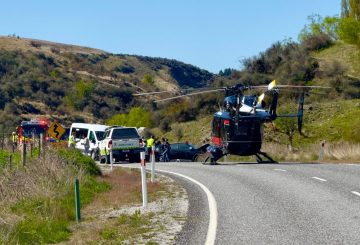Sinh viên New Zealand ngày càng trở nên quan tâm đến tác động của khoản nợ tăng lên triển vọng tương lai của họ. Theo trang web của Studylink, số tiền sinh viên có thể mượn cho chi phí sinh hoạt đã tăng hơn $100 mỗi tuần trong sáu năm qua. Vào ngày 01 tháng 4, số tiền này sẽ tăng hơn $20 lên 302 USD mỗi tuần.
Đối với sinh viên vay số tiền tối đa cho phép, họ sẽ nhận được hơn 15.000 đô la cho vay chi phí sinh hoạt mỗi năm. Chủ tịch New Zealand Union of Students Associations (NZUSA), Ellen Dixon, nói rằng hầu hết sinh viên sẽ lấy ra toàn bộ số tiền và cũng làm việc từ 30 đến 40 giờ mỗi tuần để tiếp tục học tập. Dixon nói kiểu lối sống này là không lành mạnh và sinh viên không thể chú ý đến việc học tập của họ. Bà cũng lo ngại rằng những người trẻ tuổi không được giáo dục đủ về tác động của nợ nần.
Đảng Xanh đồng ý và tin rằng sinh viên cần nhiều giải pháp “Band-Aid” cho việc chi phí sinh hoạt tăng cao. Người phát ngôn của Giáo dục Đại học, Chloe Swarbrick, cho biết nghiên cứu của đảng cho thấy hai phần ba sinh viên thường xuyên không đủ khả năng chi trả những điều cơ bản như tiền thuê nhà, thực phẩm và hóa đơn điện. Swarbrick tin rằng việc thêm tiền vào các khoản vay sẽ chỉ làm cho nó tồi tệ hơn.
Dixon nói rằng sinh viên không nên phải lựa chọn giữa học tập và mua nhà. Trong quá khứ, sự cố chi tiết về thói quen chi tiêu của người nộp đơn đã đóng vai trò như một rào cản cho người mua nhà đầu tiên nhận được chấp thuận thế chấp. Cô ấy lo ngại chúng ta có thể thấy nhiều điều đó cho thế hệ tiếp theo của chúng tôi, đặc biệt là khi họ tiếp tục sử dụng mua ngay bây giờ trả tiền dịch vụ sau này như Afterpay để có được.
Một nhà kinh tế của ANZ, Miles Workman, nói rằng mức lương trung bình tăng tổng thể có thể đủ để đáp ứng các khoản vay sinh viên tăng cao. Tuy nhiên, Workman nói rằng có một vấn đề lớn hơn ảnh hưởng đến tài chính đối với sinh viên: hệ thống hưu trí được thiết lập để có lợi cho thế hệ cũ bởi vì chúng tôi chạy một hệ thống “trả tiền như bạn đi”.
NZUSA và đảng Xanh muốn cơ cấu lại giáo dục đại học, với Swarbrick nói rằng trợ cấp sinh viên phổ cập sẽ có lợi. Hiện nay, chỉ một phần ba số sinh viên nhận trợ cấp sinh viên là 279 đô la mỗi tuần. Swarbrick cho biết số liệu mới nhất của Bộ Giáo dục từ năm 2021 cho thấy sẽ tăng khoảng 22 phần trăm so với đó để cung cấp một khoản trợ cấp sinh viên phổ cập.






























































